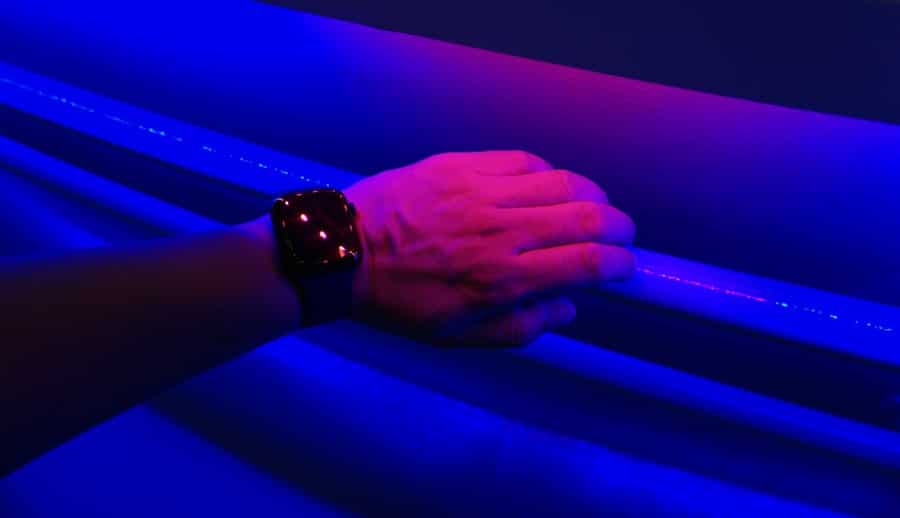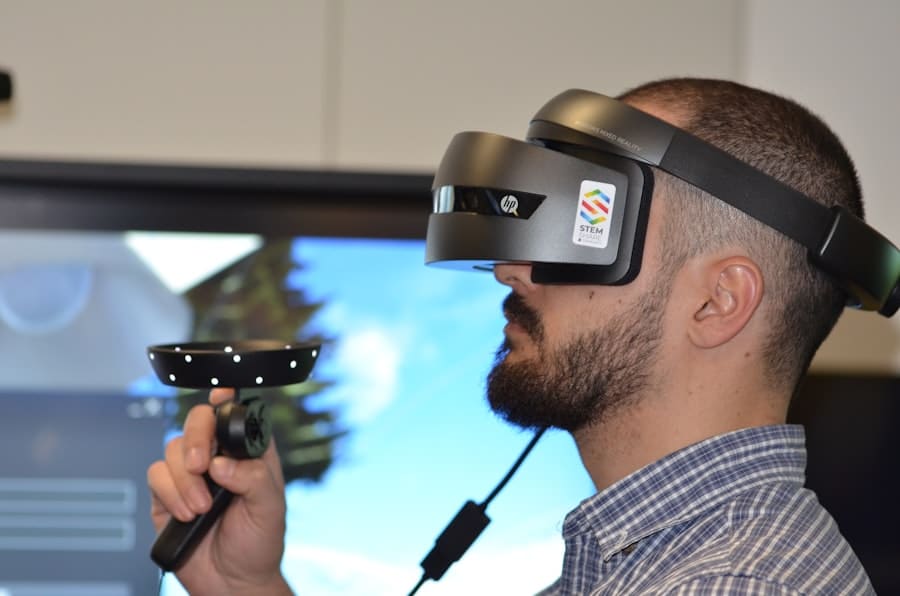In recent years, voice-activated devices have surged in popularity, transforming the way individuals interact with technology. This evolution can be traced back to advancements in natural language processing and artificial intelligence, which have enabled machines to understand and respond to human speech with remarkable accuracy. The introduction of smart speakers, such as Amazon Echo and Google Home, marked a significant turning point in this trend.
These devices not only serve as music players but also function as personal assistants, capable of managing tasks, providing information, and controlling other smart devices within the home. The convenience of simply speaking commands has made these gadgets appealing to a broad audience, from tech enthusiasts to those who may not be as comfortable with traditional technology. The proliferation of voice-activated devices is also fueled by the increasing integration of voice recognition technology into smartphones and other portable gadgets.
Virtual assistants like Siri, Google Assistant, and Cortana have become commonplace, allowing users to perform a myriad of functions hands-free. This shift towards voice interaction reflects a broader societal trend where multitasking and efficiency are paramount. As people seek to streamline their daily routines, the ability to control devices through voice commands has become an attractive solution.
Key Takeaways
- Voice-activated devices are becoming increasingly popular in home entertainment.
- They offer enhanced convenience and accessibility for users.
- Integration with smart home technology creates seamless control experiences.
- Privacy and security remain significant concerns with voice-activated systems.
- Future trends point to more advanced and diverse voice-activated entertainment options.
Convenience and Accessibility
One of the most compelling advantages of voice-activated devices is the unparalleled convenience they offer. Users can perform tasks without needing to physically interact with a device, which is particularly beneficial in situations where hands are occupied or when individuals have mobility challenges. For instance, someone cooking in the kitchen can easily ask their smart speaker for a recipe or to set a timer without having to touch their phone or tablet.
This hands-free capability enhances productivity and allows for a more fluid interaction with technology. Moreover, voice-activated devices significantly improve accessibility for individuals with disabilities. For those who may have difficulty using traditional input methods like keyboards or touchscreens, voice commands provide an alternative that can be more intuitive and easier to use.
Features such as voice dictation and command recognition empower users to navigate their devices and access information without barriers.
As manufacturers continue to prioritize accessibility in their designs, the potential for voice-activated devices to enhance the lives of many becomes increasingly evident.
Integration with Smart Home Technology
The integration of voice-activated devices with smart home technology has created a seamless ecosystem that enhances the functionality of both systems. Smart home devices, including thermostats, lights, security cameras, and appliances, can now be controlled through simple voice commands. This interconnectedness allows users to manage their entire home environment from a single point of control, often through a central hub like a smart speaker.
For example, a user can say, “Turn off all the lights,” and instantly dim or turn off lights throughout their home without needing to walk from room to room. This integration extends beyond mere convenience; it also contributes to energy efficiency and security. Homeowners can monitor and adjust their energy consumption through voice commands, leading to potential savings on utility bills.
Additionally, voice-activated security systems can provide real-time updates and alerts, allowing users to respond quickly to any unusual activity. The ability to control multiple devices with a single command not only simplifies daily routines but also enhances the overall safety and efficiency of modern living spaces.
Enhanced User Experience
The user experience associated with voice-activated devices has evolved significantly over time, driven by improvements in technology and user interface design. Early iterations of voice recognition systems often struggled with accuracy and responsiveness, leading to frustration among users. However, advancements in machine learning algorithms have resulted in systems that can understand context, recognize different accents, and even learn from user interactions.
This enhanced understanding allows for more natural conversations between users and their devices. Furthermore, the personalization capabilities of voice-activated systems contribute to an enriched user experience. Many devices can learn individual preferences over time, tailoring responses and suggestions based on past interactions.
For instance, a smart speaker might recognize that a user frequently requests news updates in the morning and proactively provide this information at the start of each day. This level of personalization not only makes interactions more efficient but also fosters a sense of companionship between users and their devices, blurring the lines between technology and daily life.
Growing Variety of Voice-Activated Devices
The market for voice-activated devices has expanded dramatically, encompassing a diverse range of products designed to cater to various needs and preferences. Beyond smart speakers, consumers can now find voice-activated televisions, kitchen appliances, wearable technology, and even vehicles equipped with voice recognition capabilities. This diversification reflects an understanding that voice interaction can enhance numerous aspects of daily life, from entertainment to cooking to transportation.
For example, smart TVs equipped with voice control allow users to search for shows or movies simply by speaking titles or genres. This eliminates the need for cumbersome remote controls or navigating complex menus. Similarly, kitchen appliances like smart ovens can be programmed through voice commands, enabling users to set cooking times or temperatures without needing to touch buttons or dials.
As manufacturers continue to innovate and expand their offerings, the variety of voice-activated devices will likely grow even further, making this technology an integral part of everyday life.
Impact on Traditional Remote Controls

The rise of voice-activated devices has had a profound impact on traditional remote controls and input methods. As consumers increasingly embrace the convenience of voice commands, the reliance on physical remotes has diminished significantly. Many modern televisions and streaming devices now come equipped with built-in voice recognition capabilities, allowing users to navigate content without needing to fumble with buttons or scroll through menus.
This shift has prompted manufacturers to rethink the design and functionality of remote controls altogether. Some companies have begun phasing out traditional remotes in favor of mobile apps that utilize voice commands for navigation. Others are incorporating touchless gesture controls alongside voice recognition to create a more intuitive user experience.
As this trend continues, it raises questions about the future role of remote controls in home entertainment systems—will they become obsolete entirely, or will they evolve into hybrid devices that combine multiple input methods?
Privacy and Security Concerns
Despite the many benefits associated with voice-activated devices, there are significant privacy and security concerns that warrant careful consideration. The very nature of these devices—constantly listening for wake words—raises questions about data collection and surveillance. Users may be unaware that their conversations could be recorded or analyzed by companies seeking to improve their services or target advertisements more effectively.
Moreover, incidents involving unauthorized access to smart home systems have highlighted vulnerabilities in security protocols associated with voice-activated technology. Hackers may exploit weaknesses in network security to gain control over connected devices or access sensitive information stored within them. As consumers become more aware of these risks, manufacturers are under increasing pressure to implement robust security measures that protect user data while maintaining the convenience that voice activation offers.
Future Trends in Voice-Activated Home Entertainment
Looking ahead, several trends are poised to shape the future of voice-activated home entertainment systems. One significant development is the continued integration of artificial intelligence into these devices, enabling them to provide even more personalized experiences for users. As AI algorithms become more sophisticated, they will be able to anticipate user preferences based on historical data and contextual cues, creating a more tailored entertainment experience.
Additionally, advancements in natural language processing will likely lead to more conversational interactions between users and their devices. Future systems may be able to understand complex queries or follow multi-step commands seamlessly—allowing for richer interactions that mimic human conversation more closely. This evolution could redefine how users engage with their entertainment systems, making them feel less like tools and more like companions.
Furthermore, as smart home ecosystems continue to expand, we can expect greater interoperability between different brands and types of devices. This will allow users to create customized routines that integrate various aspects of their home entertainment systems with other smart technologies—such as adjusting lighting based on movie genres or automatically pausing playback when someone enters the room. The future promises an exciting landscape where voice-activated technology becomes an even more integral part of our daily lives, enhancing both convenience and enjoyment in home entertainment experiences.
In exploring the reasons behind the dominance of voice-activated devices in home entertainment, it’s interesting to consider how these technologies are reshaping consumer habits and preferences. For a deeper understanding of how technology influences lifestyle choices, you might find the article on the Apple Watch vs. Samsung Galaxy Watch particularly insightful, as it discusses the impact of smart devices on daily routines and decision-making.
FAQs
What are voice-activated devices?
Voice-activated devices are electronic gadgets that respond to spoken commands, allowing users to control functions hands-free using voice recognition technology.
Why are voice-activated devices popular in home entertainment?
They offer convenience, ease of use, and hands-free control over entertainment systems, enabling users to play music, control TV settings, and access streaming services simply by speaking.
Which types of home entertainment devices commonly use voice activation?
Common devices include smart speakers, smart TVs, streaming media players, and sound systems equipped with virtual assistants like Amazon Alexa, Google Assistant, or Apple Siri.
How do voice-activated devices improve user experience in home entertainment?
They simplify navigation, reduce the need for remote controls, provide quick access to content, and allow multitasking without interrupting activities.
Are voice-activated devices compatible with multiple entertainment platforms?
Yes, many voice-activated devices support integration with various streaming services, smart home systems, and entertainment platforms for seamless control.
Is privacy a concern with voice-activated home entertainment devices?
Privacy can be a concern since these devices often listen for wake words and may collect voice data; users should review privacy settings and manufacturer policies.
Do voice-activated devices require an internet connection?
Most voice-activated devices rely on an internet connection to process voice commands and access online content, though some basic functions may work offline.
Can voice-activated devices be used by people with disabilities?
Yes, voice control enhances accessibility by allowing users with mobility or vision impairments to operate entertainment systems more easily.
What are some popular brands of voice-activated home entertainment devices?
Popular brands include Amazon Echo, Google Nest, Apple HomePod, Roku Voice Remote, and smart TVs from Samsung, LG, and Sony with built-in voice assistants.
How do voice-activated devices impact the future of home entertainment?
They are driving the trend toward smarter, more integrated, and user-friendly entertainment environments, shaping how people interact with media and technology at home.


